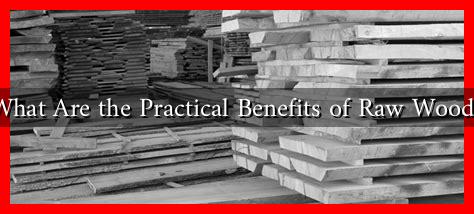-
Table of Contents
What Are the Practical Benefits of Raw Wood?
Raw wood, often overlooked in favor of processed materials, offers a multitude of practical benefits that can enhance various aspects of our lives. From construction to crafting, the natural properties of wood make it a versatile and sustainable choice. This article explores the numerous advantages of using raw wood, supported by examples, case studies, and relevant statistics.
1. Sustainability and Environmental Impact
One of the most significant benefits of raw wood is its sustainability. Unlike synthetic materials, wood is a renewable resource that can be harvested responsibly. When sourced from sustainably managed forests, raw wood contributes to a healthier environment. Here are some key points regarding its sustainability:
- Carbon Sequestration: Trees absorb carbon dioxide as they grow, helping to mitigate climate change. According to the U.S. Forest Service, a single tree can absorb approximately 48 pounds of CO2 annually.
- Biodegradability: Raw wood is biodegradable, meaning it will decompose naturally without harming the environment, unlike plastic and other synthetic materials.
- Energy Efficiency: The energy required to process wood is significantly lower than that needed for metals or plastics, making it a more energy-efficient choice.
2. Aesthetic Appeal and Versatility
Raw wood possesses a unique aesthetic that can enhance the beauty of any space. Its natural grains, textures, and colors provide a warm and inviting atmosphere. Here are some practical applications of raw wood’s aesthetic appeal:
- Interior Design: Raw wood is increasingly popular in interior design, with many homeowners opting for exposed beams, wooden flooring, and rustic furniture to create a cozy ambiance.
- Art and Craftsmanship: Artists and craftsmen often prefer raw wood for its workability and unique character, allowing for the creation of bespoke pieces that tell a story.
- Landscaping: In outdoor settings, raw wood can be used for garden beds, fences, and pathways, blending seamlessly with nature.
3. Durability and Strength
Raw wood is known for its durability and strength, making it an ideal material for construction and furniture. Different types of wood offer varying levels of hardness and resistance to wear. For instance:
- Hardwoods: Species like oak, maple, and cherry are renowned for their strength and longevity, making them suitable for high-traffic areas and heavy-use furniture.
- Softwoods: Pine and cedar are lighter and easier to work with, making them ideal for projects like framing and cabinetry.
According to the American Wood Council, wood structures can last for decades, with proper maintenance, making it a cost-effective choice in the long run.
4. Health Benefits
Using raw wood in our living spaces can also have positive health implications. Studies have shown that natural materials can improve indoor air quality and overall well-being:
- Air Quality: Wood has the ability to regulate humidity levels, absorbing excess moisture and releasing it when the air is dry, which can help prevent mold growth.
- Psychological Benefits: Natural materials like wood have been linked to reduced stress levels and increased feelings of comfort and relaxation, as noted in a study published in the Journal of Environmental Psychology.
5. Economic Advantages
Investing in raw wood can also yield economic benefits. The initial cost may be higher than some synthetic alternatives, but the long-term savings can be substantial:
- Longevity: Durable wood products often require fewer replacements, leading to lower overall costs.
- Energy Savings: The insulating properties of wood can lead to reduced heating and cooling costs in buildings.
Conclusion
Raw wood is a remarkable material that offers a plethora of practical benefits, from sustainability and aesthetic appeal to durability and health advantages. Its versatility makes it suitable for various applications, whether in construction, interior design, or crafting. As we continue to seek sustainable and eco-friendly options, raw wood stands out as a responsible choice that not only enhances our living spaces but also contributes positively to the environment. By embracing raw wood, we can enjoy its numerous benefits while supporting a more sustainable future.
For more information on sustainable wood sourcing, visit U.S. Forest Service.


